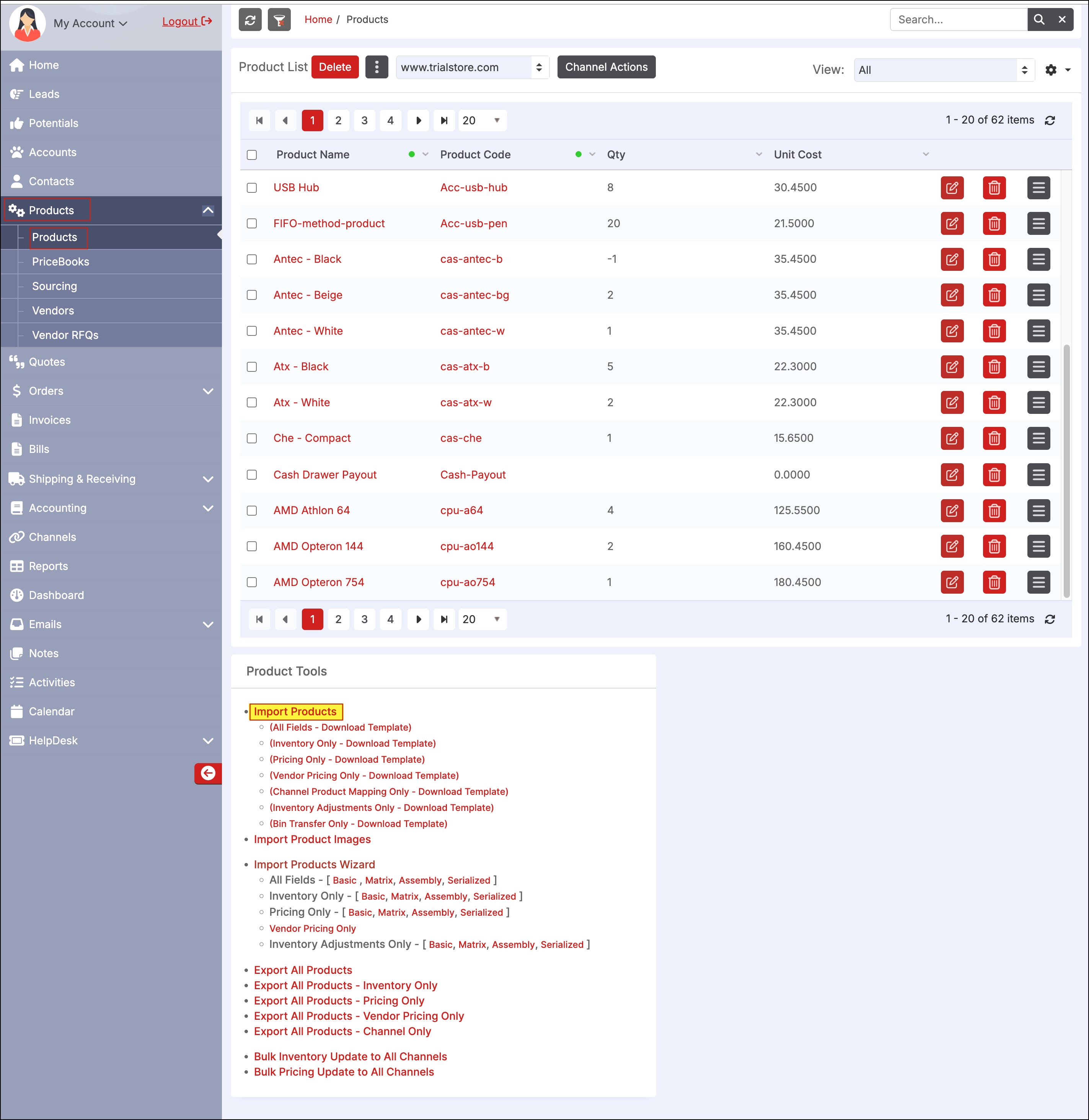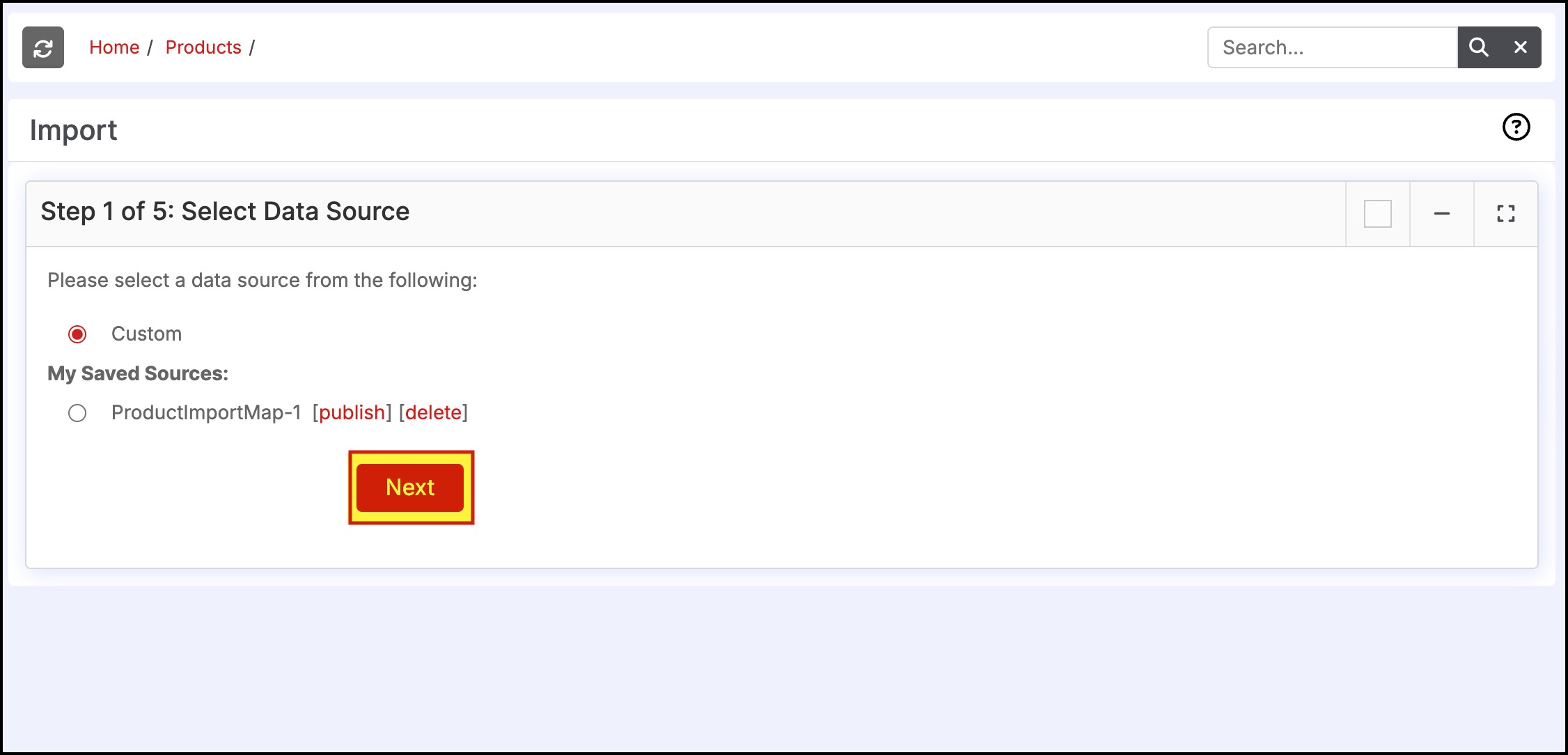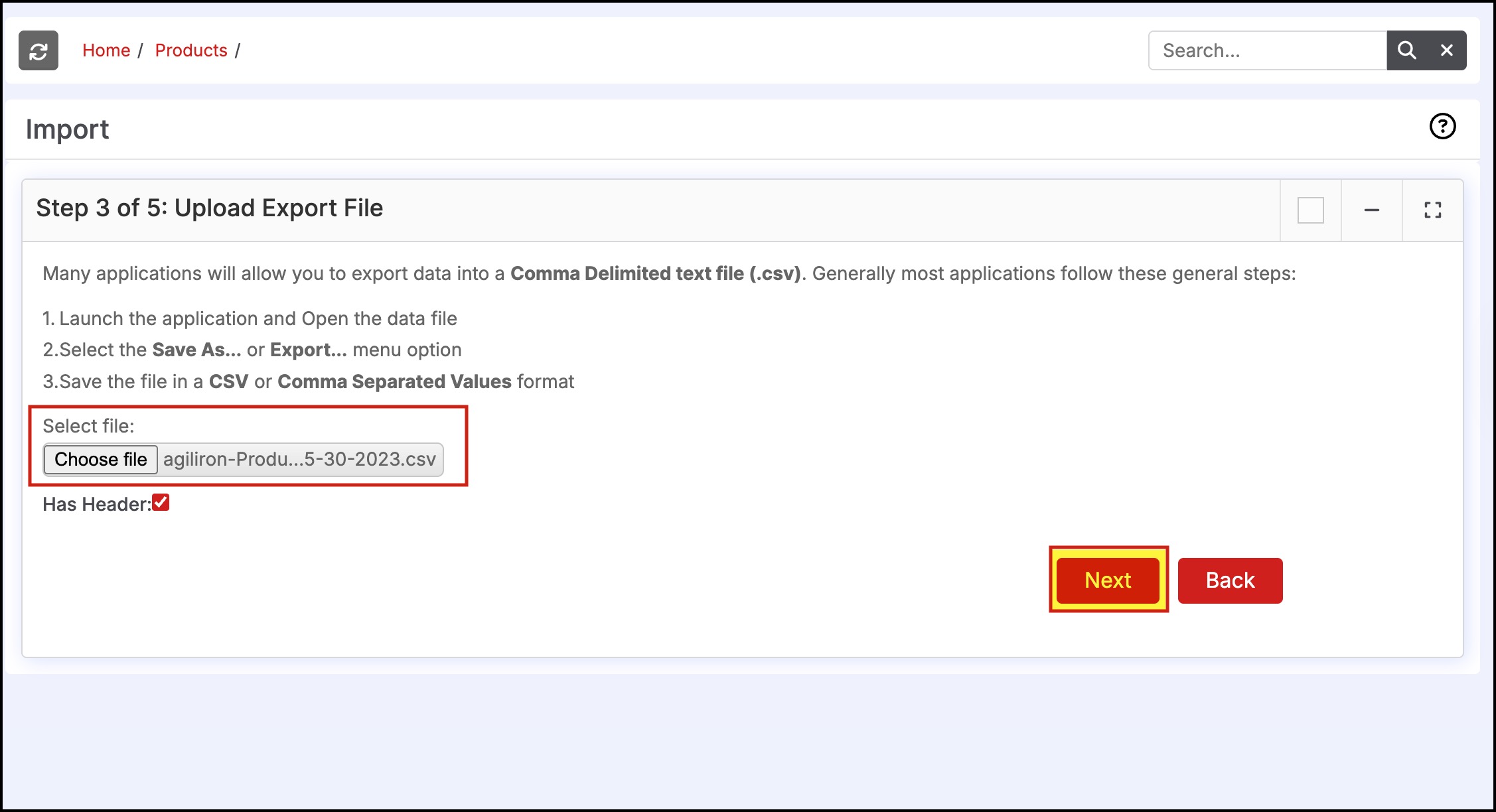Importing Products
The application allows the user to import products into the system in a CSV (comma separated values) file format. Most other systems will allow you to export data in this format facilitating migration of existing data into this system.
Note:
- On Windows, to convert a file from MS-Excel to CSV format, click on "File > Save As..." and select the "CSV (Comma Delimited)" option.
- On Mac OSX, to convert a file from MS-Excel to CSV format, click on "File > Save As..." and select the "CSV (Windows)" option.
To import products, go the "Products" tab and select "Import Products".
- The "All Fields - Download Template" link provides a spreadsheet template for entering the product information you wish to import along with instructions on using the template.
- In the Agiliron Import Template, all columns in red text are required fields. However, "Unit Cost", "Qty in Stock" and "Stock Location" fields are optional fields only if using the "All Mapped Fields" import.
- Exception to this rule - if you fill out one of these columns such as "Unit Cost" then you need to also fill out "Qty in Stock" and "Stock Location". Either all three of those columns are populated or none of them should be populated. This is useful if you are importing products and do not want to update the inventory quantities.

Next, you will see the wizard that walks the user thru the import process.
- In this first step, select an option from a data source mapping method. If this is the first time you are importing data, choose "Custom".
- If a previous mapping exists under "My Saved Sources", then you may select that if the column mapping has not changed in your spreadsheet vs the saved mapping. If the header row or the columns of the CSV file are changed, the saved mappings will need to be mapped again.
- Click the "Next" button.

Select the import type from the following list. "All Mapped Fields" will be used to import all fields in the spreadsheet.

In the next step, select the import file by clicking the "Browse" button.
- The "Has Header" checkbox is selected by default and assumes the import file has a header line that identifies the data fields in the file.
- Click the "Next" button to go to the next step.

The next step involves mapping each field in the file to the corresponding field in this application's product database.
Select the relevant fields that can be mapped.
- If a selection displays "--Do not map this field--" review to see if it should be mapped to a custom field or pricebook that hasn't been created, or the column heading in the spreadsheet may not match the text in the database. In the latter instance, select the correct field in the drop-down list to correct.
- If this a mapping that you plan to use again, save it using the "Save as Custom Mapping" check box and enter a name for this mapping. Then click the "Import Now" button.
The other product types behave in a similar and consistent way.

An example mapping of the data fields is shown above. For all products, the "Inventory Qty/Ordered Unit" is set to 1 by default for the Preferred Vendor Part Number unless that value has been specified in the spreadsheet.
Reimported Products Update:
- Import of products that already exist in the system (as identified by their name and code) will replace all the attributes in the system for that product with the ones imported thru the file if "All Mapped Fields" button is selected.
- If the "Inventory Levels Only" button is selected, then only inventory-related fields (Stock Information, Unit Cost) are updated for products that already exist in the system.
- If "Pricebooks Only" is selected, then only pricing information in the Pricebook columns mapped is updated for products that already exist in the system.
- If "Vendor Pricing Only" is selected, then only vendor-related fields (Vendor Number, Vendor Pricing, Preferred Order Quantity, Order Units, and Inventory Qry/Ordered Units) are updated for products that already exist in the system. The Vendor Name must already exist in the system as well.
- Please note that in the case of the "Inventory Levels Only" and "Pricebooks Only" imports, it is still necessary to have the mandatory columns in the spreadsheet (e.g. Product Name, Product Code, Unit Cost) though the values of these fields are not updated in the system during import. A sample product reimport spreadsheet for all product types can be downloaded at Pricebook Only Reimport Example (Hover on the link >Left click on the mouse > select "Save link as").
Updated 5 months ago
